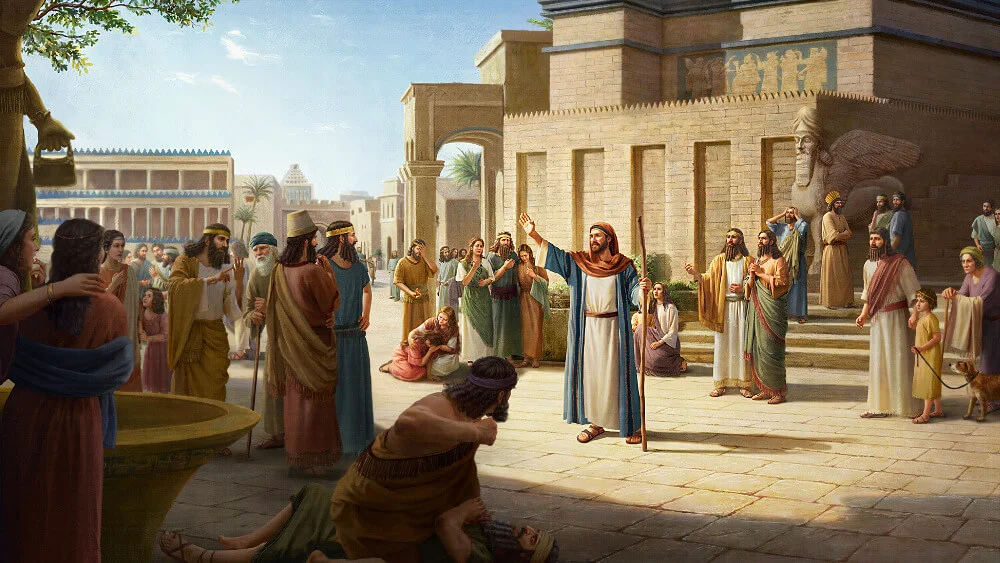Jesus’ Words to His Disciples After His Resurrection
Jhn 20:26–29 And after eight days again His disciples were within, and Thomas with them: then came Jesus, the doors being shut, and stood in the middle, and said, Peace be to you. Then said He to Thomas, Reach here your finger, and behold My hands; and reach here your hand, and thrust it into My side: and be not faithless, but believing. And Thomas answered and said to Him, My LORD and my God. Jesus said to him, Thomas, because you have seen Me, you have believed: blessed are they that have not seen, and yet have believed.
Jhn 21:16–17 He said to him again the second time, Simon, son of John, love you Me? He said to Him, Yes, Lord; You know that I love You. He said to him, Feed My sheep. He said to him the third time, Simon, son of John, love you Me? Peter was grieved because He said to him the third time, Love you Me? And he said to Him, Lord, You know all things; You know that I love You. Jesus said to him, Feed My sheep.
What these passages recount are certain things that the Lord Jesus did and said to His disciples after His resurrection. First, let us take a look at any differences there might be in the Lord Jesus before and after the resurrection. Was He still the same Lord Jesus of days past? The scriptures contain the following line describing the Lord Jesus after the resurrection: “Then came Jesus, the doors being shut, and stood in the middle, and said, Peace be to you.” It is very clear that the Lord Jesus at that time no longer inhabited a fleshly body, but that He was now in a spiritual body. This was because He had transcended the limitations of the flesh; even though the door was closed, He could still come amongst the people and allow them to see Him. This is the greatest difference between the Lord Jesus after the resurrection and the Lord Jesus living in the flesh before the resurrection. Even though there was no difference between the appearance of the spiritual body of that moment and the appearance of the Lord Jesus as it was before, the Lord Jesus in that moment had become one that felt like a stranger to the people, because He had become a spiritual body after being resurrected from the dead, and compared to His previous flesh, this spiritual body was more puzzling and confusing to people. It also created more distance between the Lord Jesus and the people, and people felt in their hearts that the Lord Jesus in that moment had become more mysterious. These cognitions and feelings on the part of the people suddenly brought them back to an age of believing in a God that could not be seen or touched. So, the first thing that the Lord Jesus did after His resurrection was to allow everyone to see Him, to confirm that He exists, and to confirm the fact of His resurrection. In addition, this action restored His relationship with the people back to the way it was when He was working in the flesh, when He was the Christ whom they could see and touch. One outcome of this is that the people had no doubt whatever that the Lord Jesus had been resurrected from death after being nailed to the cross, and they also had no doubt in the Lord Jesus’ work to redeem mankind. Another outcome is that the fact of the Lord Jesus appearing to people after His resurrection and allowing people to see and touch Him firmly secured mankind in the Age of Grace, ensuring that, from this time on, people would not return to the previous Age of Law on the supposed basis that the Lord Jesus had “disappeared” or that He had “left without a word.” He thus ensured that they would continue to move forward, following the Lord Jesus’ teachings and the work He had done. Thus, a new phase in the work in the Age of Grace was formally opened, and from that moment on, the people who had been living under the law formally emerged from the law and entered into a new era, a new beginning. These are the multi-faceted meanings of the Lord Jesus’ appearance to mankind after the resurrection.
Since the Lord Jesus was now inhabiting a spiritual body, how could people touch Him and see Him? This question touches upon the significance of the Lord Jesus’ appearance to mankind. Did you notice anything in the passages of scripture that we just read? Generally, spiritual bodies cannot be seen or touched, and after the resurrection the work that the Lord Jesus had taken on had already been completed. So in theory, He had absolutely no need to return amongst the people in His original image to meet with them, but the appearance of the Lord Jesus’ spiritual body to people like Thomas made the significance of His appearance more concrete, so that it penetrated more deeply into the people’s hearts. When He came to Thomas, He let Thomas the doubter touch His hand, and told him: “Reach here your hand, and thrust it into My side: and be not faithless, but believing.” These words and actions were not things that the Lord Jesus wanted to say and do only after He had been resurrected; in fact, they were things that He wanted to say and do before He had been nailed to the cross, because Thomas’ doubts had not begun only then, but had been with him the entire time he had been following the Lord Jesus. It is evident that, before He had been nailed to the cross, the Lord Jesus already had an understanding of people such as Thomas. So what can we see from this? He was still the same Lord Jesus after His resurrection. His essence had not changed. However, here was the Lord Jesus who had been resurrected from the dead and returned from the spiritual world with His original image, with His original disposition, and with His understanding of mankind from His time in the flesh, so He went to Thomas first and let Thomas touch His rib, to not only let Thomas see His spiritual body after resurrection, but to let Thomas touch and feel the existence of His spiritual body, and completely let go of his doubts. Before the Lord Jesus was nailed to the cross, Thomas always doubted that He was Christ, and was incapable of belief. His faith in God was established only on the basis of what he could see with his own eyes, what he could touch with his own hands. The Lord Jesus had a good understanding of the faith of this type of person. They only believed in God in heaven, and did not believe at all in the One sent by God, or the Christ in the flesh, and nor would they accept Him. In order for Thomas to acknowledge and believe in the existence of the Lord Jesus and that He truly was God incarnate, He allowed Thomas to reach out his hand and touch His rib. Was Thomas’ doubting any different before and after the Lord Jesus’ resurrection? He was always doubting, and except by the Lord Jesus’ spiritual body personally appearing to him and allowing him to touch the nail marks on His body, there was no way that anyone could resolve his doubts and make him let go of them. So, from the time the Lord Jesus allowed Thomas to touch His rib and let him really feel the existence of the nail marks, Thomas’ doubt disappeared, and he truly knew that the Lord Jesus had been resurrected, and he acknowledged and believed that the Lord Jesus was the true Christ and God incarnate. Although at this time Thomas no longer doubted, he had lost forever the chance to meet with Christ. He had lost forever the chance to be together with Him, to follow Him, to know Him. He had lost the chance for Christ to perfect him. The Lord Jesus’ appearance and His words provided a conclusion and a verdict on the faith of those who were full of doubts. He used His actual words and actions to tell the doubters, to tell those who only believed in God in heaven but did not believe in Christ: God did not commend their belief, nor did He commend them for following Him while doubting Him. The day when they fully believed in God and Christ could only be the day that God completed His great work. Of course, that day was also the day that a verdict was made upon their doubt. Their attitude toward Christ determined their fate, and their stubborn doubt meant that their faith bore them no fruit, and their hardness meant that their hopes were in vain. Because their belief in God in heaven was fed on illusions, and their doubt toward Christ was actually their true attitude toward God, even though they touched the nail marks on the Lord Jesus’ body, their faith was still useless and their outcome could only be described as drawing water with a bamboo basket—all in vain. What the Lord Jesus said to Thomas was also very clearly His way of telling every person: The resurrected Lord Jesus is the Lord Jesus, who spent thirty-three and a half years working among mankind. Although He had been nailed to the cross and experienced the valley of the shadow of death, and though He had experienced resurrection, He had undergone no change in any aspect. Although He now had nail marks on His body, and although He had been resurrected and walked out from the grave, His disposition, His understanding of mankind, and His intentions toward mankind had not changed in the slightest. Also, He was telling people that He had come down from the cross, triumphed over sin, overcome hardships, and triumphed over death. The nail marks were just the evidence of His victory over Satan, evidence of being a sin offering to successfully redeem all of mankind. He was telling people that He had already taken on mankind’s sins and that He had completed His work of redemption. When He returned to see His disciples, He told them this message by means of His appearance: “I am still alive, I still exist; today I am truly standing in front of you so that you can see and touch Me. I will always be with you.” The Lord Jesus also wanted to use the case of Thomas as a warning for future people: Although you can neither see nor touch the Lord Jesus in your faith in Him, you are blessed because of your true faith, and you can see the Lord Jesus because of your true faith, and this kind of person is blessed.
These words recorded in the Bible that the Lord Jesus spoke when He appeared to Thomas are of great help to all people in the Age of Grace. His appearance to Thomas and the words He spoke to him have had a profound impact on the generations that came after; they hold everlasting significance. Thomas represents a type of person who believes in God yet doubts God. They are of a suspicious nature, have sinister hearts, are treacherous, and do not believe in the things that God can accomplish. They do not believe in God’s omnipotence and His sovereignty, and neither do they believe in God incarnate. However, the Lord Jesus’ resurrection flew in the face of these traits that they have, and it also provided them with an opportunity to discover their own doubt, to recognize their own doubt, and to acknowledge their own treachery, thus coming to truly believe in the existence and resurrection of the Lord Jesus. What happened with Thomas was a warning and a caution for later generations so that more people could warn themselves not to be doubters like Thomas, and that if they did fill themselves with doubt, then they would sink into the darkness. If you follow God, but just like Thomas, always want to touch the Lord’s rib and feel His nail marks to confirm, to verify, to speculate on whether or not God exists, then God will forsake you. So, the Lord Jesus requires people to not be like Thomas, only believing what they can see with their own eyes, but to be pure, honest people, to not harbor doubts toward God, but to simply believe in and follow Him. People like this are blessed. This is a very small requirement the Lord Jesus makes of people, and it is a warning for His followers.
The above is the Lord Jesus’ attitude toward those who are full of doubts. So what did the Lord Jesus say to and do for those who are able to honestly believe in and follow Him? This is what we are going to look at next, through a dialogue between the Lord Jesus and Peter.
In this conversation, the Lord Jesus repeatedly asked Peter one thing: “Simon, son of John, love you Me?” This is a higher standard which the Lord Jesus required from people like Peter after His resurrection, people who truly believe in Christ and strive to love the Lord. This question was a sort of investigation and interrogation, but even more, it was a requirement and an expectation of people like Peter. The Lord Jesus used this method of questioning so that people would reflect on themselves and look into themselves and ask: What are the Lord Jesus’ requirements for people? Do I love the Lord? Am I a person who loves God? How should I love God? Even though the Lord Jesus only asked this question of Peter, the truth is that in His heart, by asking Peter these questions, He wanted to use this opportunity to ask this same type of question of more people who seek to love God. It is only that Peter was blessed to act as the representative of this type of person, to receive this questioning from the Lord Jesus’ own mouth.
Compared to the following words, which the Lord Jesus said to Thomas after His resurrection: “Reach here your hand, and thrust it into My side: and be not faithless, but believing,” His thrice repeated questioning of Peter: “Simon, son of John, love you Me?” allows people to better feel the sternness of the Lord Jesus’ attitude, and the urgency He felt during His questioning. As for Thomas the doubter, with his deceitful nature, the Lord Jesus allowed him to reach out his hand and touch the nail marks in His body, which led him to believe that the Lord Jesus was the Son of man resurrected, and to acknowledge the Lord Jesus’ identity as Christ. And although the Lord Jesus did not sternly rebuke Thomas and nor did He verbally express any clear judgment of him, He nonetheless used practical actions to let Thomas know that He understood him, while also displaying His attitude and determination toward that type of person. The Lord Jesus’ requirements and expectations of that type of person cannot be seen from what He said, because people like Thomas simply do not have a single shred of true faith. The Lord Jesus’ requirements for them only go so far, but the attitude He revealed toward people like Peter is entirely different. He did not require that Peter reach out his hand and touch His nail marks, nor did He say to Peter: “Be not faithless, but believing.” Instead, He repeatedly asked Peter the same question. The question was thought-provoking and meaningful, a question that cannot help but cause every follower of Christ to feel remorse and fear, but also to feel the Lord Jesus’ anxious, sorrowful mood. And when they are in great pain and suffering, they are more able to understand the Lord Jesus Christ’s concern and His care; they realize His earnest teaching and strict requirements of pure, honest people. The Lord Jesus’ question allows people to feel that the Lord’s expectations of people revealed in these simple words are not merely to believe in and follow Him, but to achieve having love, loving your Lord and your God. This kind of love is caring and obeying. It is humans living for God, dying for God, dedicating everything to God, and expending and giving everything for God. This kind of love is also giving God comfort, allowing Him to enjoy testimony and to be at rest. It is mankind’s repayment to God, man’s responsibility, obligation and duty, and it is a way that people must follow for their entire lives. These three questions were a requirement and an exhortation that the Lord Jesus made of Peter and all people who would be made perfect. It was these three questions that led and motivated Peter to follow his path in life to the end, and it was these questions at the Lord Jesus’ parting that led Peter to start on his path of being made perfect, that led him, because of his love for the Lord, to care for the Lord’s heart, to obey the Lord, to offer comfort to the Lord, and to offer up his whole life and his whole being because of this love.
During the Age of Grace, God’s work was primarily for two types of people. The first was the type of person who believed in and followed Him, who could keep His commandments and bear the cross, and who could hold to the way of the Age of Grace. This type of person would gain God’s blessing and enjoy God’s grace. The second type of person was like Peter, someone who could be made perfect. So, after the Lord Jesus was resurrected, He first did these two most meaningful things. One was done with Thomas, the other with Peter. What do these two things represent? Do they represent God’s true intentions of saving mankind? Do they represent God’s sincerity toward mankind? The work He did with Thomas was to warn people not to be doubters, but to simply believe. The work He did with Peter was to strengthen the faith of people like Peter, and to make clear His requirements of this type of person, to show what goals they should be pursuing.
After the Lord Jesus was resurrected, He appeared to the people He thought necessary, spoke with them, and made requirements of them, leaving behind His intentions for and expectations of people. That is to say, as God incarnate, His concern for mankind and requirements of people never changed; these remained the same when He was in the flesh and when He was in His spiritual body after being nailed to the cross and being resurrected. He was concerned about these disciples before He was up on the cross, and in His heart He was clear about the state of every single person and He understood every person’s deficiencies and, of course, His understanding of every person after He had died, been resurrected, and become a spiritual body was the same as it had been when He was in the flesh. He knew that people were not entirely certain of His identity as Christ, but during His time in the flesh He did not make strict demands of people. However, after He had been resurrected, He appeared to them, and He made them absolutely certain that the Lord Jesus had come from God and that He was God incarnate, and He used the fact of His appearance and His resurrection as the greatest vision and motivation for mankind’s lifelong pursuit. His resurrection from death not only strengthened all those who followed Him, but it also thoroughly implemented His work of the Age of Grace among mankind, and thus the gospel of the Lord Jesus’ salvation in the Age of Grace gradually spread to every corner of humanity. Would you say that the Lord Jesus’ appearance after His resurrection had any significance? If you were Thomas or Peter at that time, and you encountered this one thing in your life that was so meaningful, what kind of impact would it have had on you? Would you have seen this as the best and the greatest vision of your life of believing in God? Would you have seen this as a force driving you as you followed God, strived to satisfy Him, and sought to love God in your whole life? Would you have expended a lifetime of effort to spread this greatest of visions? Would you have accepted spreading the Lord Jesus’ salvation as a commission from God? Even though you have not experienced this, the two examples of Thomas and Peter are already enough for modern people to gain a clear understanding of God and His will. It could be said that after God had become flesh, after He personally experienced the life among mankind and personally experienced the human life, and after He saw the depravity of mankind and the situation of human life at that time, God in the flesh felt more deeply how helpless, lamentable, and pitiful mankind is. God gained more empathy for the human condition because of His humanity which He possessed while living in the flesh, because of His fleshly instincts. This led Him to feel greater concern for His followers. These are probably things that you cannot understand, but I can describe this worry and care felt by God in the flesh for every one of His followers using just two words: “intense concern.” Even though this term comes from human language, and even though it is very human, it nonetheless truly expresses and describes God’s feelings for His followers. As for God’s intense concern for humans, over the course of your experiences you will gradually feel this and get a taste of it. However, this can only be achieved by gradually understanding God’s disposition on the basis of pursuing a change in your own disposition. When the Lord Jesus made this appearance, it caused His intense concern for His followers in humanity to materialize and be passed over to His spiritual body, or you could say, to His divinity. His appearance allowed people to once more experience and feel God’s concern and care while also powerfully proving that God is the One who launches an age, who unfurls an age, and who also ends an age. Through His appearance, He strengthened the faith of all people and proved to the world the fact that He is God Himself. This gave His followers eternal confirmation, and through His appearance He also launched a phase of His work in the new age.
—The Word, Vol. 2. On Knowing God. God’s Work, God’s Disposition, and God Himself III








